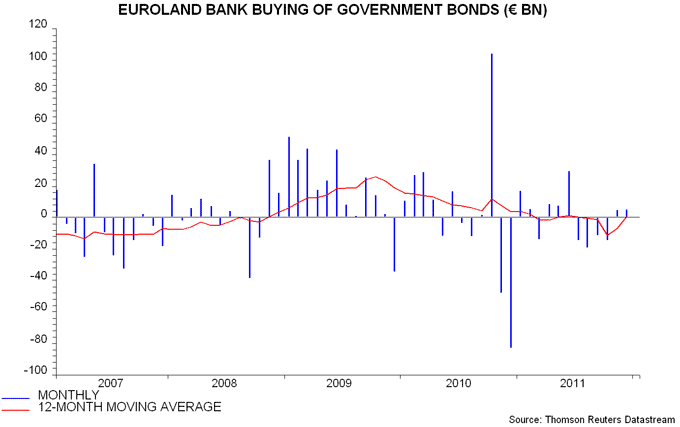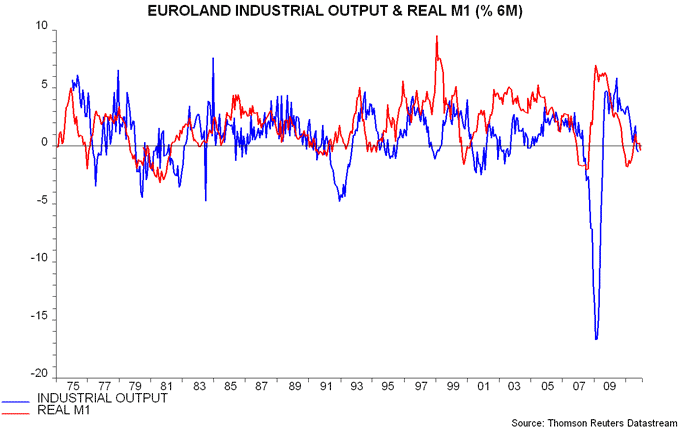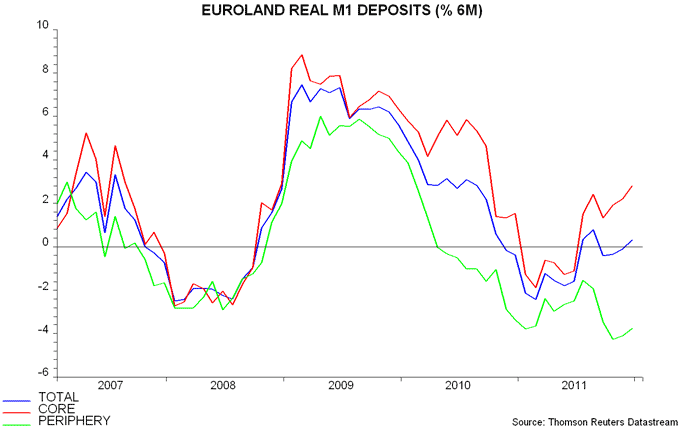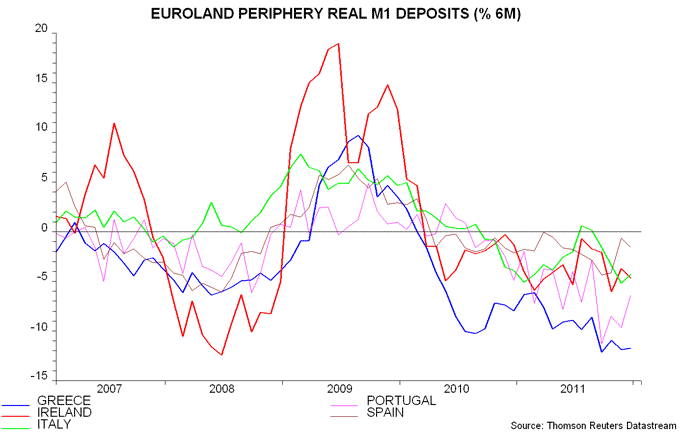Eurozone monetary trends weak, suggesting further trouble
Eurozone monetary statistics for December confirm that banks have shifted from selling to buying government bonds in response to the ECB’s interest rate cuts and liquidity injections. However, the positive monetary impact of these purchases, and the ECB’s own buying via its securities markets programme, has been offset by a fall in private sector lending.
Banks bought €5.1 billion of euro-denominated government bonds in December after an upwardly-revised €4.6 billion in November – see first chart. The sums are small relative to cumulative sales of €57.5 billion over the prior four months, and to a €267.1 billion increase in the ECB’s monetary policy lending to banks between 28 October and 30 December. Purchases, however, are likely to have increased in January, judging from recent peripheral yield declines.
The boost to broad money M3 in December from bond buying was swamped by a €75.7 billion contraction of loans to the private sector. This number was distorted downwards by a fall in lending to quasi-banks (i.e. unrelated to the “real economy”) but there was also a significant reduction in loans to non-financial corporations. M3 declined by 0.5% in December following drops of 0.1% and 0.5% in November and October respectively.
The best monetary leading indicator of the economy is real narrow money M1. Worryingly, the six-month change in this measure returned to negative territory in December for the first time since June, suggesting falling output during the first half of 2012 – second chart. The hope – realistic but yet to be supported by the data – is that real M1 will revive in early 2012 in response to the ECB’s policy actions, setting the stage for an economic recovery late in the year.
The country breakdown of real M1 deposits continues to show respectable growth in the core offset by a slump in the periphery – third chart. The six-month core increase, indeed, rose to a 15-month high in December, reflecting strength in Germany and the Netherlands, with French real deposits flat. The peripheral change, by contrast, was -3.8%, or -7.4% annualised, with the smallest decline in Spain, followed by Italy, Ireland, Portugal and Greece – fourth chart.
The implied scenario of core economic resilience with deep recessions in the periphery suggests further trouble ahead, with the Bundesbank likely to veto additional aggressive ECB easing even as weak peripheral economies derail fiscal consolidation plans.





Reader Comments